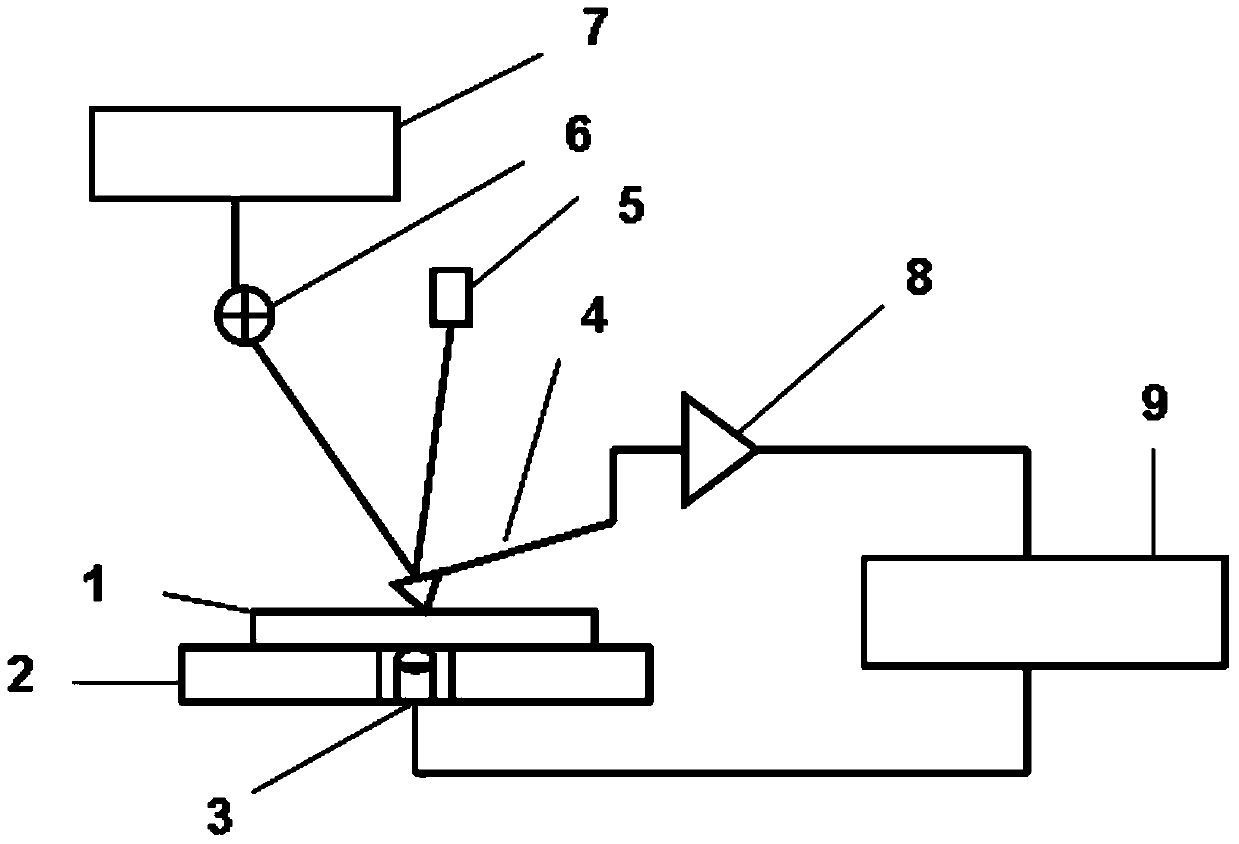Method for detecting photocurrent signal of photoelectric conversion material with conductive atomic force microscope
An atomic force microscope and photoelectric conversion material technology, applied in the field of signal detection, can solve the problems of difficulty in distinguishing current amplifiers, rising material temperature, affecting the accuracy of test results, etc., and achieve the effect of suppressing useless noise and improving the detection signal-to-noise ratio.
- Summary
- Abstract
- Description
- Claims
- Application Information
AI Technical Summary
Problems solved by technology
Method used
Image
Examples
Embodiment 1
[0028] In this embodiment, the sample is an ITO / P3HT:PCBM film sample with a photoelectric conversion effect, and the surface morphology and photocurrent distribution of the sample are tested by a conductive atomic force microscope.
[0029] The structure diagram of the test platform is as follows: figure 1 As shown, it includes a microscopic topography detection part and a photocurrent signal detection part.
[0030] The microscopic morphology detection process is as follows: the sample 1 is placed on the sample stage 2 of the atomic force microscope micromirror, and the tip of the conductive probe 4 forms a stable contact with the sample. The light source of the laser 5 is incident on the surface of the probe 4 and reflected to the four-quadrant photodetector 6 . The four-quadrant photodetector 6 converts the optical signal into an electrical signal and inputs it to the controller 7 of the atomic force microscope.
[0031] The photocurrent signal detection process is as fo...
PUM
 Login to View More
Login to View More Abstract
Description
Claims
Application Information
 Login to View More
Login to View More - R&D
- Intellectual Property
- Life Sciences
- Materials
- Tech Scout
- Unparalleled Data Quality
- Higher Quality Content
- 60% Fewer Hallucinations
Browse by: Latest US Patents, China's latest patents, Technical Efficacy Thesaurus, Application Domain, Technology Topic, Popular Technical Reports.
© 2025 PatSnap. All rights reserved.Legal|Privacy policy|Modern Slavery Act Transparency Statement|Sitemap|About US| Contact US: help@patsnap.com



